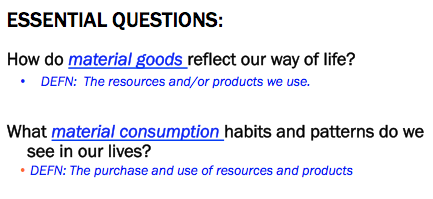At any rate here is just a few quick reasons as to why teaching geography rules:
1) It validates what has been dismissed as lacking in educational quality or merit.
One of my favorite things to teach my students about in class is cultural diffusion. The other day this latest fad on youtube was sent to me by a few different sources. At first I just laughed and bobbed my head along to the tune, but that changed later that day when I realized just how widely spread this has become. Housewives in California, the Oregon Duck, a squad of Naval officers at Annapolis, it's crazy. There were also some great articles by media sources stretching from the Philippines to Chicago, and all of it was devoted to one Korean's mocking jab at the rich of Korea. Seth Dixon did a great write up about this on his scoopit website.
Then there's metal, my favorite genre of music. I love folks like the Requiem Metal Podcast and film makers like Sam Dunn for promoting the intellectual side of the genre. It's folks like this that appreciate the music for its art form, its statements about society, as well as its reflection of various cultural ideas.
Check out the trailer to Sam Dunn's documentary Global Metal
So what do you do with all of this? For my class I intend to use both Psy's Gangnam Style and Dunn's Global Metal as examples of cultural diffusion, globalization, and as a means to discuss how local cultures interpret global cultural ideas. "How do ideas spread globally?" and "How do local cultures assimilate global ideas?" are two essential questions that come to mind.
For the metal I'm thinking lyrical and musical analysis: Perhaps Aces High by Iron Maiden, Holy Mountains by System of a Down, Quell the Souls in Sing Ling Temple by Taiwan's Chthonic to start. I'm looking to add a couple more to that list, perhaps some Sepultura.
For Gangnam style I'm hoping to be a bit bolder, I'd like the kids to create an "IBSH Gangnam style" video, we'll see how that unfolds.
2) The critical geography lens, you can look at something random and see geography in it.
Case in point, does it get more random than this idea?
This a bridge built for animal use in Alberta, Canada. There are more examples of this here: Wildlife Overpasses.
I love this picture. It's an excellent example of human-environment interaction. What I love about it most however, I feel like this is something a kid in elementary school came up with. Also it make me think of the West Wing's Big Block of Cheese episode: The Story of Pluie.
3) All the fun maps.
When I was a student it never occurred to me what could be on a map besides physical aspects (mountains, rivers, etc.) and political aspects (borders, capitals, cities, etc.). Since I began teaching geography I had my perception of what a map is and what information a map can display be completely altered and challenged time and again.
Here are some fun ones (Go here, here, or HERE for more):
Teach geography, it's fun, it rules and it matters.
-W






















